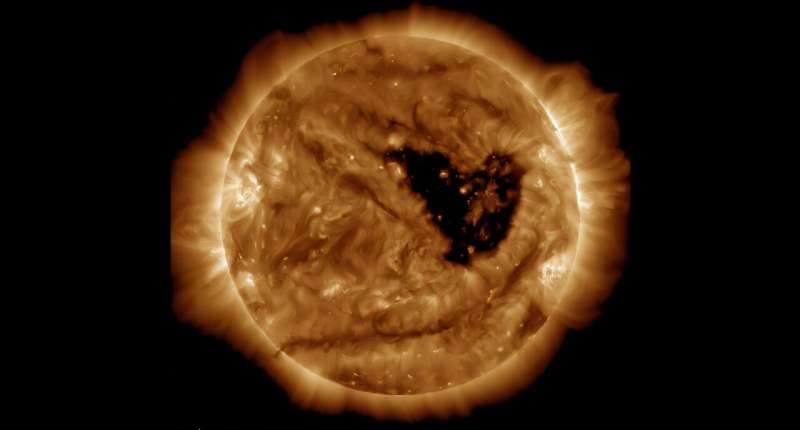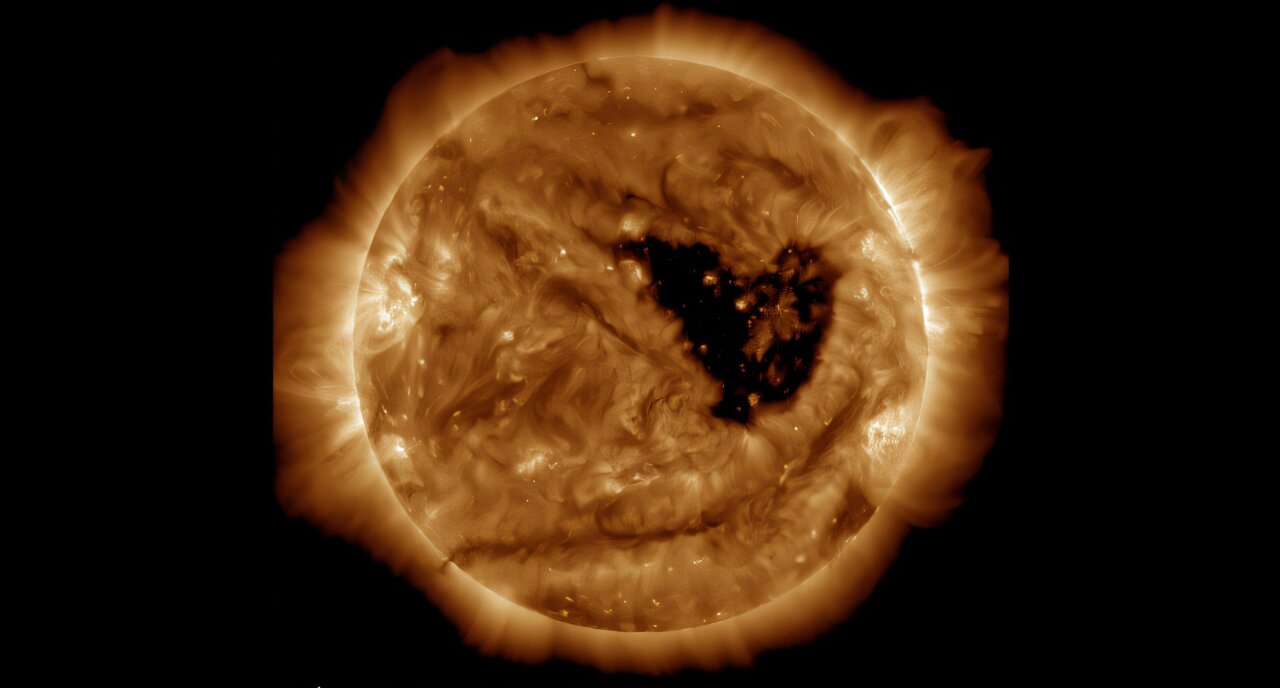
Credit: NASA
New research conducted by an international team of physicists has found that high-energy gamma rays might offer the key to unlocking the mysteries of the sun’s magnetic fields.
The study, led by the Chinese University of Hong Kong, the University of Exeter and the University of Amsterdam, concludes that teraelectronvolt (TeV) gamma rays, observable from specialist facilities on Earth, could be the result of this magnetic field interacting with cosmic rays.
By studying these TeV rays, say the researchers, it could be possible to identify where the fields are located, with their initial findings suggesting they are just beneath the solar surface.
The findings have been published in the journal Physical Review Letters.
“Magnetic activity of the sun is the driver behind space weather and, as a consequence, the effects space weather has on our society,” says Professor Andrew Hillier, one of the authors of the paper at Exeter. “However, it is not possible to see beneath the solar surface to investigate the sun’s magnetic field before they manifest on that surface. Our study provides a new method using cosmic rays to peer beneath the solar surface.
“This collaboration brings together experts in particle physics at CUHK and the University of Amsterdam and in modeling magnetic fields at the University of Exeter to develop this new insight.”
Solar gamma rays are produced when cosmic rays—highly energetic particles produced by the death of stars in the galaxy—interact with the sun’s atmosphere.
Traditional methods for studying the sun rely on visible light, X-ray or lower-energy emissions, but recently, the High Altitude Water Cherenkov Observatory (HAWC) in Mexico, has been able to detect TeV gamma rays—the most energetic emissions ever recorded from the sun.
This implies that there must be strong magnetic fields in the sun to redirect the cosmic rays—but hitherto, it has not been clear where they exist in the sun, or how the cosmic rays are able to navigate them.
This was the focus of the research led by Professor Kenny Ng Chun-yu from the Department of Physics at CUHK, in collaboration with Exeter’s Department of Physics and Astronomy, and Professor Shin’ichiro Ando from the University of Amsterdam.
Their paper proposes that strong, horizontal magnetic fields just below the sun’s surface (the photosphere), hidden from direct observation, could be responsible for this process. These fields, known as internetwork fields, when they emerge, can redirect high-energy cosmic rays, leading to the production of the TeV gamma rays observed by HAWC.
This discovery not only offers a solution to the solar gamma-ray puzzle but also establishes gamma rays as a powerful tool for studying the sun’s magnetic fields, complementing traditional methods.
Solar magnetic fields drive the solar cycle and influence events like solar flares and coronal mass ejections. These phenomena can disrupt Earth’s space environment, affecting satellite communications, power grids and space missions. Understanding these magnetic fields is key to improving space weather forecasts, protecting technology and ensuring the safety of future lunar and deep-space missions.
More information:
Kenny C. Y. Ng et al, TeV Solar Gamma Rays as a Probe for the Solar Internetwork Magnetic Fields, Physical Review Letters (2025). DOI: 10.1103/l6qw-8c1h
Provided by
University of Exeter
Citation:
Solar gamma rays could unlock mystery of sun’s hidden magnetic fields (2025, October 29)
retrieved 30 October 2025
from https://phys.org/news/2025-10-solar-gamma-rays-mystery-sun.html
This document is subject to copyright. Apart from any fair dealing for the purpose of private study or research, no
part may be reproduced without the written permission. The content is provided for information purposes only.
